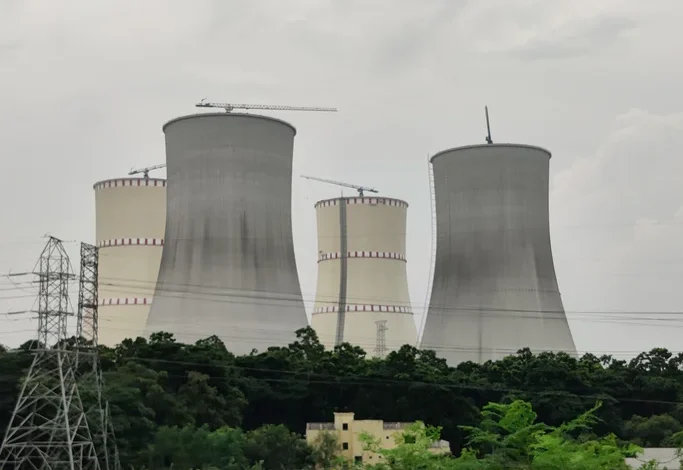Rooppur Nuclear Power Plant: Bangladesh’s Pioneering Journey in Nuclear Energy and Its Socioeconomic Impact
Bangladesh's Nuclear Energy Pathway

Introduction
The Rooppur Nuclear Power Plant (RNPP) marks a significant milestone in Bangladesh’s journey towards achieving energy independence and sustainability. Located in the Ishwardi Upazila of the Pabna District, the plant is not only the first of its kind in Bangladesh but also a symbol of the country’s aspirations to embrace advanced technology and diversify its energy resources. As Bangladesh experiences rapid industrial growth, the demand for electricity has soared, necessitating a shift from conventional fossil fuels to more sustainable energy sources.
This article delves into the multifaceted aspects of the Rooppur Nuclear Power Plant, providing a detailed overview of its construction, technological framework, economic impact, safety considerations, and the broader implications for Bangladesh’s future. Designed for energy enthusiasts, policymakers, and the general public, this comprehensive guide offers a nuanced understanding of the RNPP’s significance in the national and global context.
The Genesis of the Rooppur Nuclear Power Plant
Historical Background and Rationale
The idea of constructing a nuclear power plant in Bangladesh dates back to the 1960s when the country was still part of Pakistan. However, it was not until the 21st century that the plan began to materialize. Driven by the need to ensure energy security and reduce the nation’s carbon footprint, the Bangladeshi government revisited the nuclear option as part of its long-term energy strategy. The Rooppur site was eventually selected due to its geographical suitability, availability of cooling water from the Padma River, and relative distance from major fault lines, reducing seismic risk.
Strategic Collaboration with International Partners
To bring the project to fruition, Bangladesh entered into a strategic partnership with Russia’s state-owned nuclear corporation, Rosatom, in 2011. This collaboration provided Bangladesh with access to cutting-edge nuclear technology, financial support, and the expertise required to build and operate a nuclear facility. The partnership also included agreements on fuel supply, spent fuel management, and personnel training, ensuring a comprehensive framework for the plant’s operation and maintenance.
Technological Infrastructure of the Rooppur Plant
VVER-1200 Reactor Technology
The Rooppur Nuclear Power Plant is being constructed with two VVER-1200 reactors, a type of pressurized water reactor (PWR) developed by Rosatom. This reactor model is renowned for its safety features, including a double containment system, passive heat removal systems, and a core catcher. The VVER-1200 is a Generation III+ reactor that incorporates both active and passive safety systems, ensuring high reliability and reduced risk of accidents. The advanced technology also boasts higher fuel efficiency and a longer operational life compared to older reactor models.
Safety Systems and Regulatory Oversight
Safety is paramount in the operation of nuclear power plants, and the RNPP is no exception. The plant is equipped with multiple safety barriers designed to contain radioactive materials in the event of an incident. In addition to the core catcher and double containment, the plant’s safety features include redundant cooling systems and emergency power supplies. Bangladesh has also established a robust regulatory framework through the Bangladesh Atomic Energy Regulatory Authority (BAERA) to oversee the plant’s safety and compliance with international standards. The International Atomic Energy Agency (IAEA) regularly audits the plant to ensure adherence to global safety norms.
Radiation Protection and Environmental Safeguards
In response to concerns about potential radiation hazards, the RNPP has implemented stringent radiation protection measures. Continuous monitoring of radiation levels is conducted to ensure they remain within permissible limits. Furthermore, the plant’s design minimizes the release of radioactive effluents into the environment, and strict protocols are in place for the handling and disposal of radioactive waste. These measures are complemented by comprehensive emergency preparedness plans, including evacuation routes and community education programs to ensure readiness in the unlikely event of a nuclear incident.
Economic and Social Impact of the Rooppur Nuclear Power Plant
Boosting Local Economy and Employment
The construction of the RNPP has had a substantial economic impact on the local and national economy. Thousands of jobs have been created in construction, engineering, and ancillary industries, providing a significant boost to local employment. Additionally, the plant has spurred the development of infrastructure in the surrounding areas, including roads, housing, and public facilities, thereby improving the quality of life for local residents. Once operational, the RNPP is expected to provide a stable and affordable source of electricity, which will further stimulate economic growth by attracting investment in energy-intensive industries.
Educational and Skill Development Opportunities
The establishment of the RNPP has also opened new avenues for educational and skill development in Bangladesh. Several universities and technical institutes have introduced nuclear engineering and related programs to build a skilled workforce for the plant’s operation and maintenance. Rosatom has been instrumental in providing training and exchange programs for Bangladeshi engineers and technicians, enhancing their expertise in nuclear technology and safety. These initiatives are expected to foster a new generation of nuclear professionals who can contribute to the country’s energy sector in the coming years.
Reducing Energy Dependence and Promoting Sustainability
With the RNPP’s anticipated contribution of 2,400 MW to the national grid, Bangladesh is poised to reduce its dependence on imported fossil fuels, which currently account for a significant portion of its energy consumption. The shift to nuclear power is also aligned with Bangladesh’s commitment to the Paris Agreement on climate change, as it seeks to lower greenhouse gas emissions and transition to cleaner energy sources. The plant’s low carbon footprint and ability to provide a stable baseload power supply make it a crucial component of Bangladesh’s sustainable energy future.
Challenges and Future Prospects of the Rooppur Project
Navigating Financial and Technological Hurdles
The construction and operation of a nuclear power plant require significant financial investment and technical expertise. Despite receiving substantial financial support from Russia, the RNPP project has faced challenges related to cost overruns and delays. Additionally, the need to develop a skilled workforce and establish a robust regulatory framework has posed significant challenges. However, these hurdles are being gradually overcome through continuous training, international collaboration, and adherence to best practices in project management and safety standards.
Addressing Public Perception and Building Trust
Public perception of nuclear energy in Bangladesh remains mixed, with concerns over safety, environmental impact, and the potential for accidents. To address these concerns, the government and Rosatom have launched extensive public awareness campaigns to educate citizens about the safety features of modern nuclear reactors and the benefits of nuclear energy. Transparency and community engagement have been prioritized to build trust and ensure public support for the RNPP project.
Potential for Expansion and Regional Collaboration
Looking ahead, the successful operation of the RNPP could pave the way for the development of additional nuclear power plants in Bangladesh. The country’s experience with the RNPP could also serve as a model for regional cooperation in nuclear energy, particularly in South Asia, where energy demand is rapidly increasing. Collaborative efforts in nuclear research, safety, and waste management could enhance regional energy security and promote sustainable development.
Conclusion
The Rooppur Nuclear Power Plant stands as a testament to Bangladesh’s commitment to embracing advanced technology and achieving energy independence. As the nation’s first foray into nuclear energy, the RNPP is set to play a pivotal role in meeting the country’s growing electricity needs, driving economic growth, and reducing carbon emissions. While challenges remain, the plant’s successful completion and operation will mark a significant achievement for Bangladesh, positioning it as a leader in sustainable energy development in South Asia.
Call to Action:
Engage with us in exploring the future of nuclear energy in Bangladesh. Follow our updates and be a part of the conversation on how nuclear power can drive sustainable development and energy security in the region.




